Have you ever encountered a peculiar mushroom with gills that resemble folded leaves or a Chinese fan? If so, you’ve encountered the super cool split gill mushroom (Schizophyllum commune). This unique and widely distributed fungus is eaten in some cultures, and it shows exciting medicinal potential.
- Scientific Name: Schizophyllum commune
- Common Names: Split gill, splitgill
- Habitat: Dead and decaying wood, preferring hardwoods
- Edibility: Non-toxic
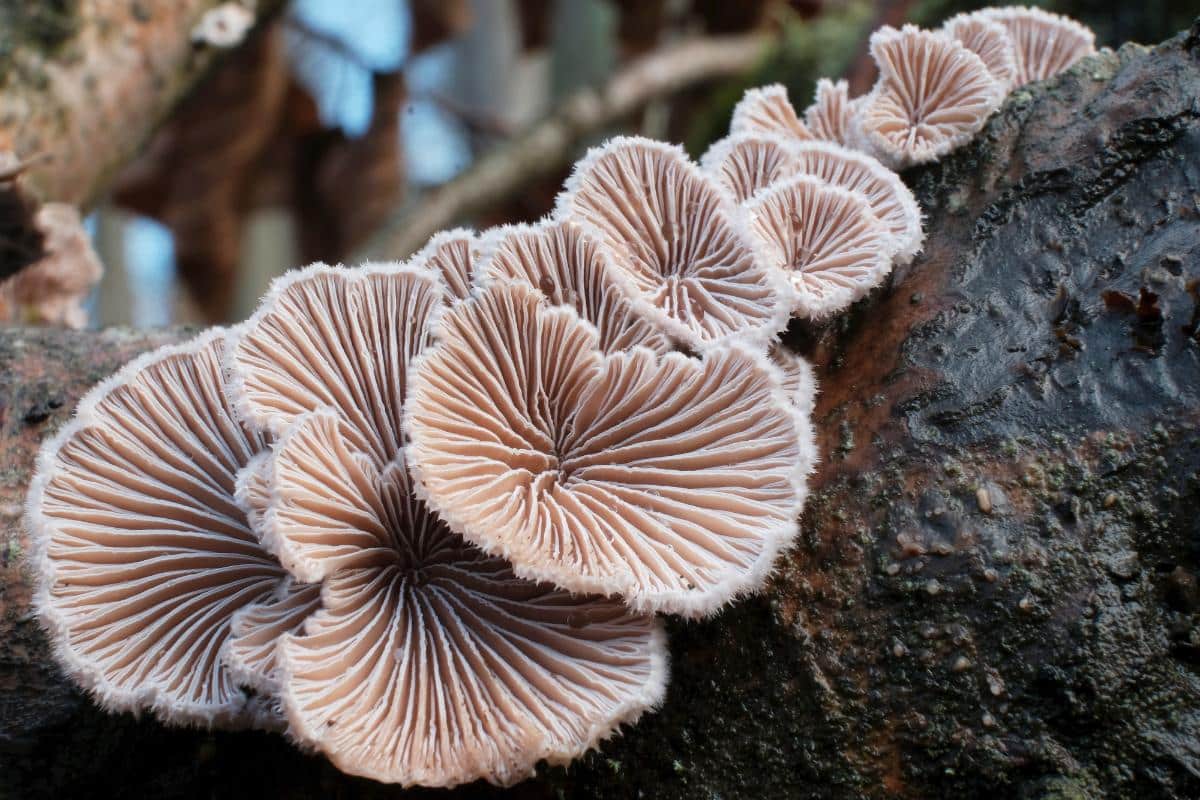
Jump to:
All About Split Gill Mushrooms
The gills of the split gill mushroom are (unsurprisingly) one of its most distinctive features. They are distant, folded together, and appear split down the middle, giving the mushroom its common name. These gills glow blue under UV light – a super fun find on a night hike or evening foray. Check out these photos from mycologist Alan Rockefeller!
Schizophyllum commune’s ability to inhabit a broad range of timbers and other plant-based substrates allows it to grow across multiple continents. In New Zealand, the split gill mushroom poses a significant biosecurity risk. The introduction of this species through trade and its potential to outcompete native fungal species is a growing concern there.
The split gill mushroom found worldwide is all the same species. This is actually quite remarkable. Often, species on separate continents look similar, but close study (especially DNA studies) shows they are just cousins or long-lost relatives. Not the case with this one, though. It truly is worldwide.
The genus name, Schizophyllum, derives from the Greek words “schiz” meaning “split” or “divide,” and “phyllum” meaning “leaf” or “gill.” The species name, commune, is a reference to its commonness and widespread distribution across all continents except Antarctica. This mushroom is also known by common names such as common split gill and split gill.
In some cultures, splitgill mushrooms have been used in traditional medicine as medicinal mushrooms, although further research is needed to understand their medicinal uses entirely.
The split gill mushroom has more than 28,000 distinct sexes!
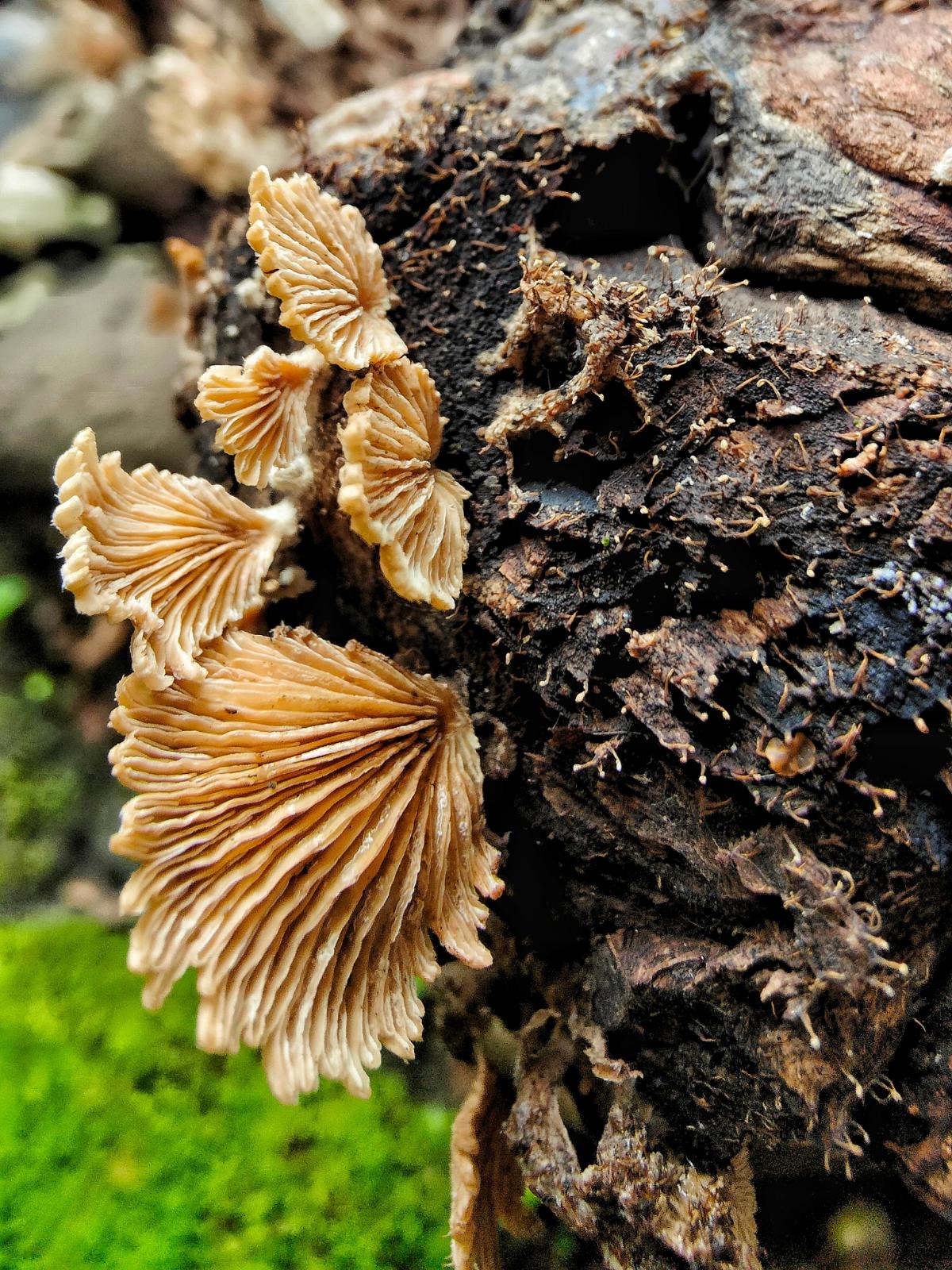
Split Gill Mushroom Identification
Season
The splitgill mushroom’s long-lived fruit bodies can be seen throughout the year.
Habitat
Split gill mushrooms are saprobic, meaning they obtain nutrients from decaying organic matter. They are commonly found on decaying hardwoods, such as fallen logs and branches, but can also occur on cut timber and other plant-based substrates. They are particularly prevalent in regions with abundant hardwood, as they typically grow on fallen branches and timber of deciduous trees.
They are frequently seen on damaged areas of the bark on sickly trees or on dead or dying branches. This fungus has also been known to fruit from silage (crop bales, like hay bales). Their fruit bodies emerge from cracks in the plastic-wrapped round bales left beside field hedges or in barns.
Split gills fungi may appear alone or in large, scattered clusters. It is more common to see large groups of them. This adaptable fungus can be encountered year-round, surviving dry spells by shriveling up and rehydrating when moisture becomes available.
This trait is an adaptation to environments with sporadic rains; when it is dry, the caps may be extremely shriveled up. With rain or moisture, they turn more spongy.
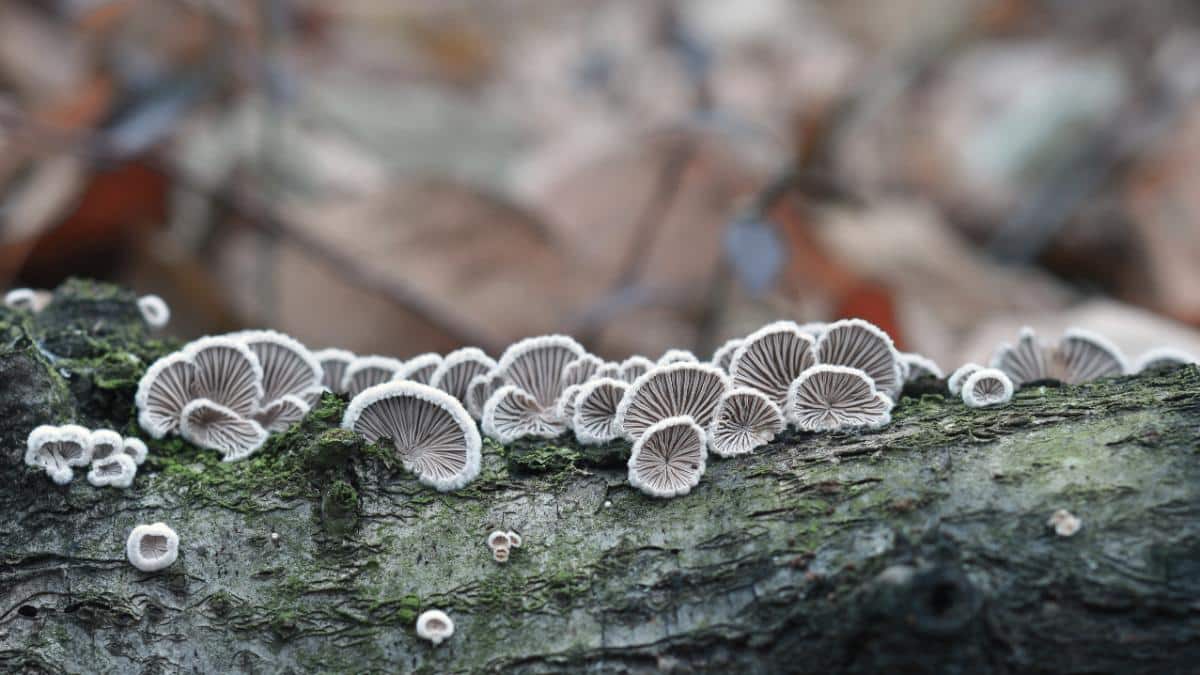
Splitgill fungi are a widespread species from North to South America across Europe, Asia, Africa, and Australasia. They grow on every continent in the world, except Antarctica.
This fungus is not only a common sight on decaying wood but also adapts to live in extreme conditions, such as deep subseafloor sedimentary environments where it can generate energy anaerobically. How crazy is that! Its ability to close its gills to protect reproductive surfaces during dry periods and reopen them when moistened is a fascinating adaptation, ensuring survival in varying climates.
Schizophyllum commune uses its split gills to dry out and rehydrate throughout the year. They open and close multiple times during a growing season, depending on whether they need to retain moisture or soak it up. This is a beneficial adaptation for a climate with unpredictable rainfall.
Unlike other types of mushrooms, the mycelium only needs to produce one set of fruiting bodies per year, which can then dry out and rehydrate while still functioning. It is even possible to find fruiting bodies of this mushroom producing spores during winter, even in cold regions.
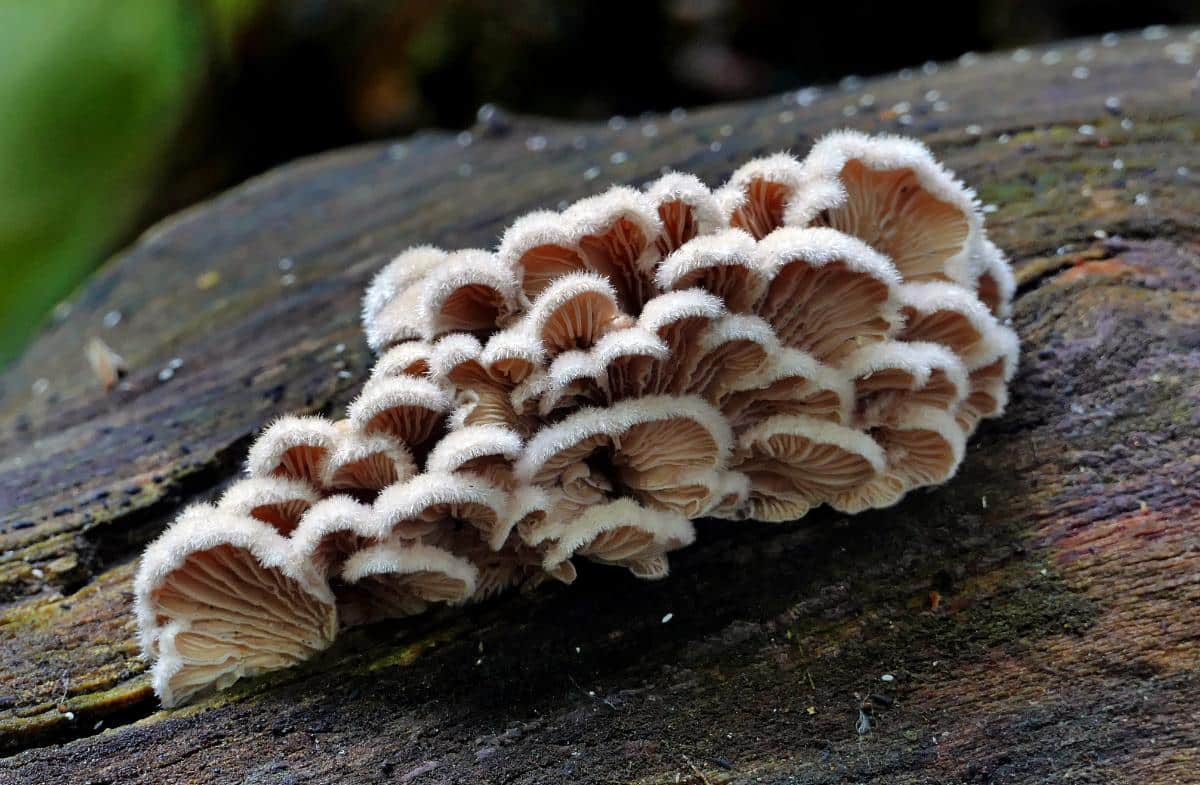
Identification
Cap
The cap of the splitgill mushroom is quite small, typically ranging from 0.4 to 1.8 inches in diameter. Its shape varies from fan-shaped when attached laterally to decaying wood to saucer-shaped when centrally attached. The flesh is dense and sturdy, with a sponge-like texture.
The cap surface is dry and covered with dense, fine hairs, giving it a velvety or granular texture. Colors can vary from white to gray, sometimes with concentric textural zones.
With age, the cap edges split apart, and the colors darken. It may also lose a lot of the fuzziness and look dry. The appearance varies as sometimes it is super dried out, and other times it is softer and spongier.
From above, the split gill mushroom looks like any host of small bracket fungi attached to the wood. However, when you turn it over and see the gills, it is obvious this is no ordinary bracket fungus.
Gills
The defining feature of the splitgill mushroom is its split or divided gills. Upon close inspection, what appears as gills are actually folded structures on the undersurface of the cap. The gills are radial, all stretching outward from where they attach to the wood like a wagon wheel.
These gills are white to gray or pinkish-gray and hairy. The splits in the gills allow them to close and protect the fertile surfaces during dry weather, reopening when moistened by rain for spore release.
Stem
The stem is often absent, or there is a short cap extension that is barely visible above the wood surface. There is no distinct stem when the fruiting bodies are attached centrally to decaying wood.
Flesh, Odor, and Spore Print
The flesh of the splitgill mushroom is tough and whitish. When sliced, it does not change color. The smell of this mushroom is not distinctive. The spore print is white.
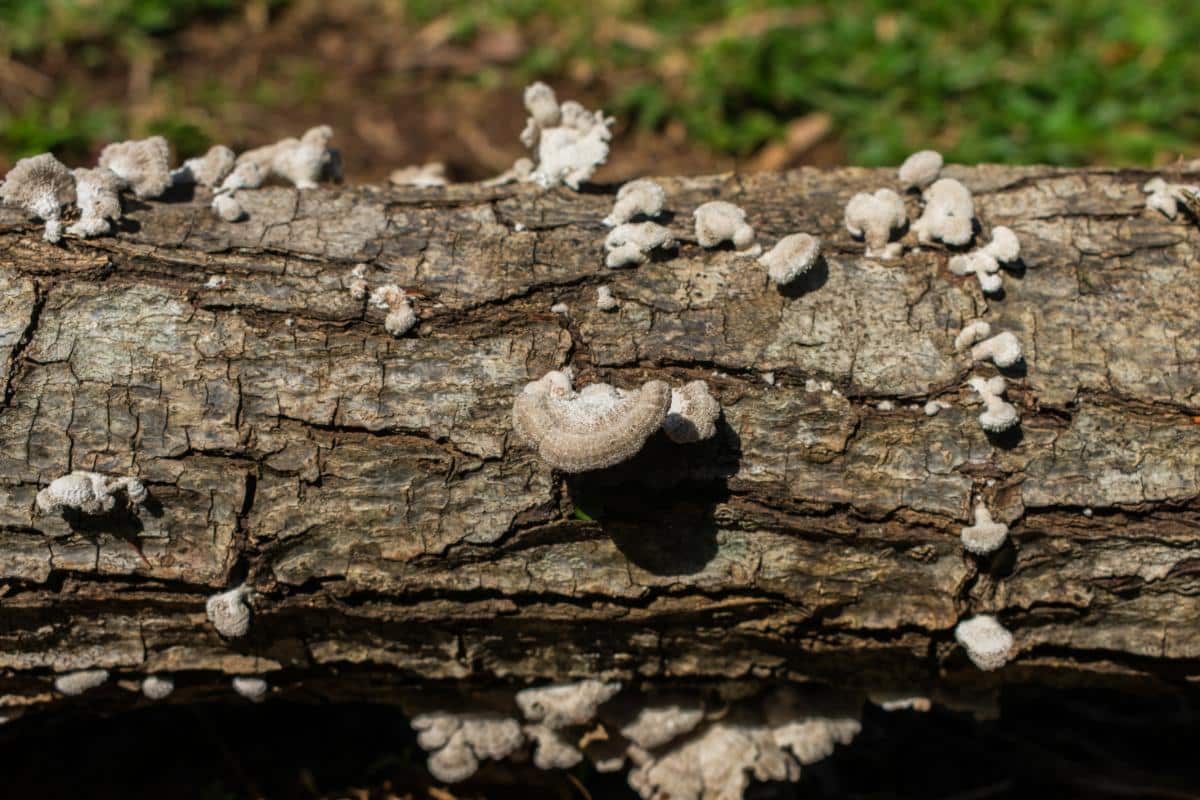
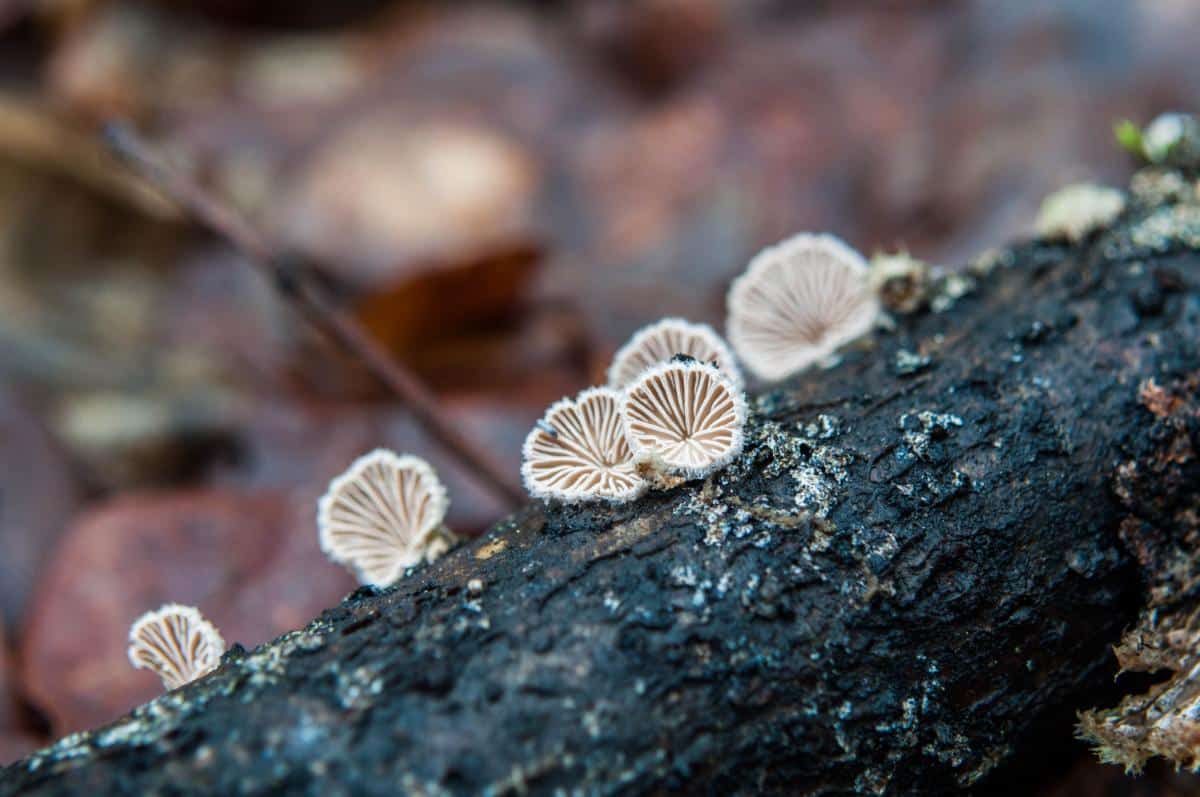
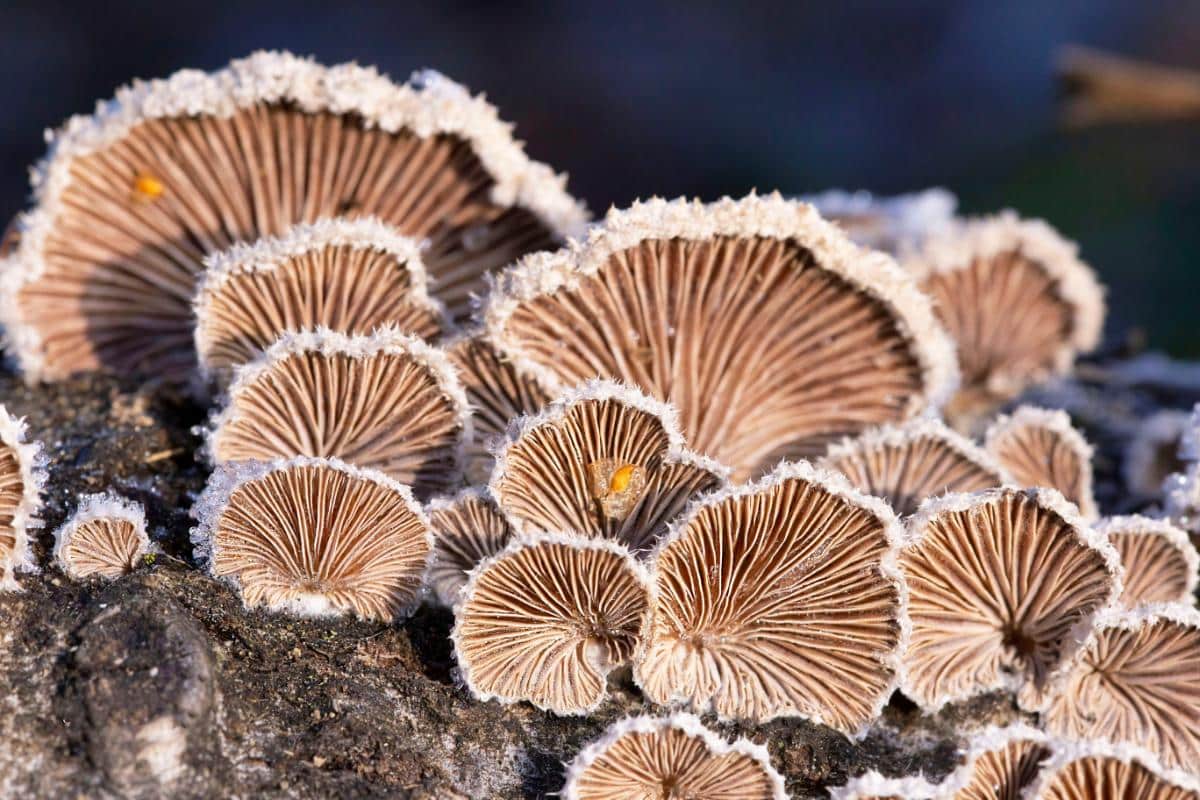
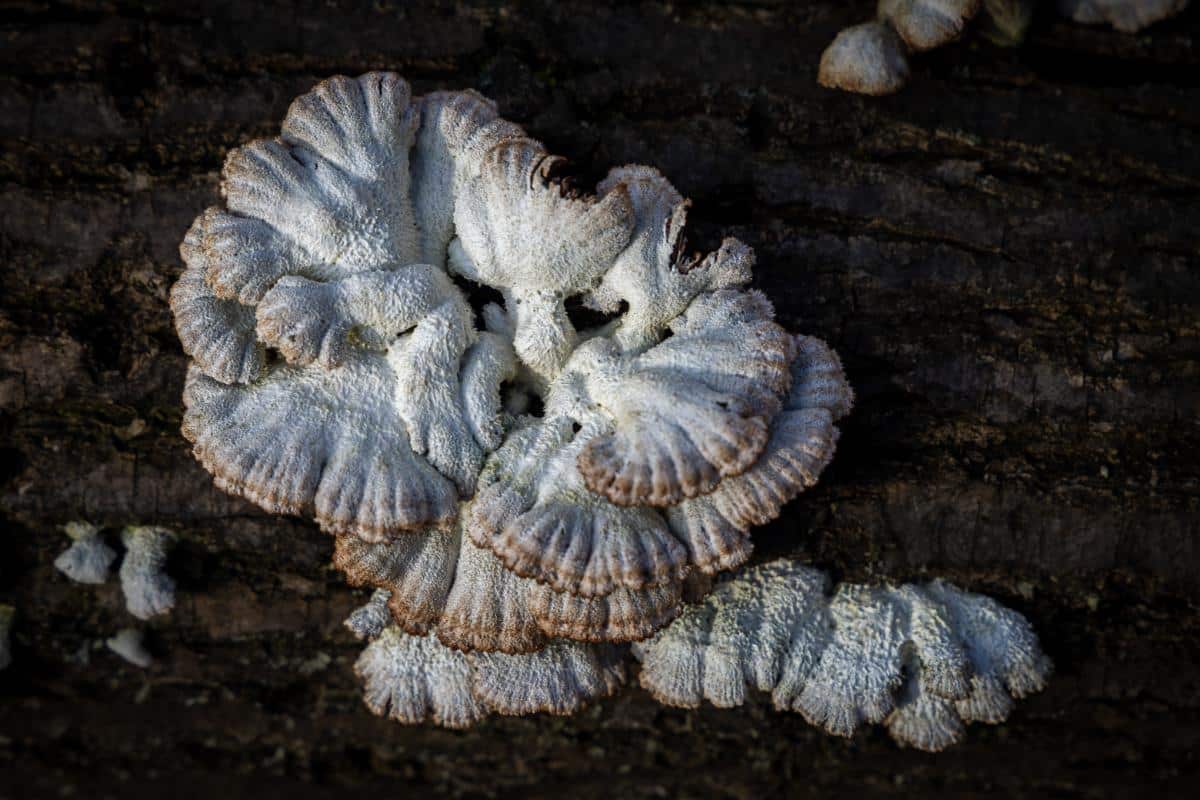
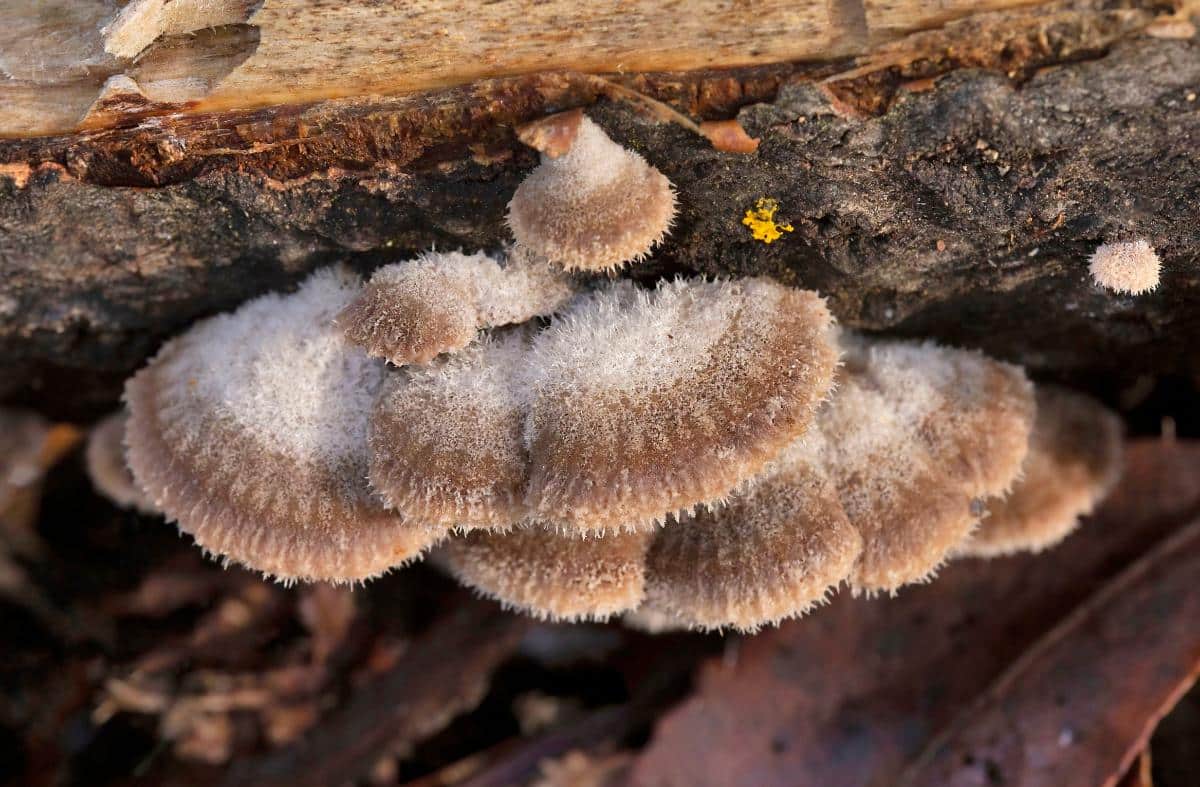
Split Gill Mushroom Lookalikes
Mock Oyster Mushroom (Phyllotopsis nidulans)
The mock oyster mushroom might be confused with the split gill due to a similar fuzzy cap, small growth size, and radiating gills from a central point. However, there are two key differences. The mock oyster is orange, or at least orangish or slightly pinkish. And, it smells terrible.
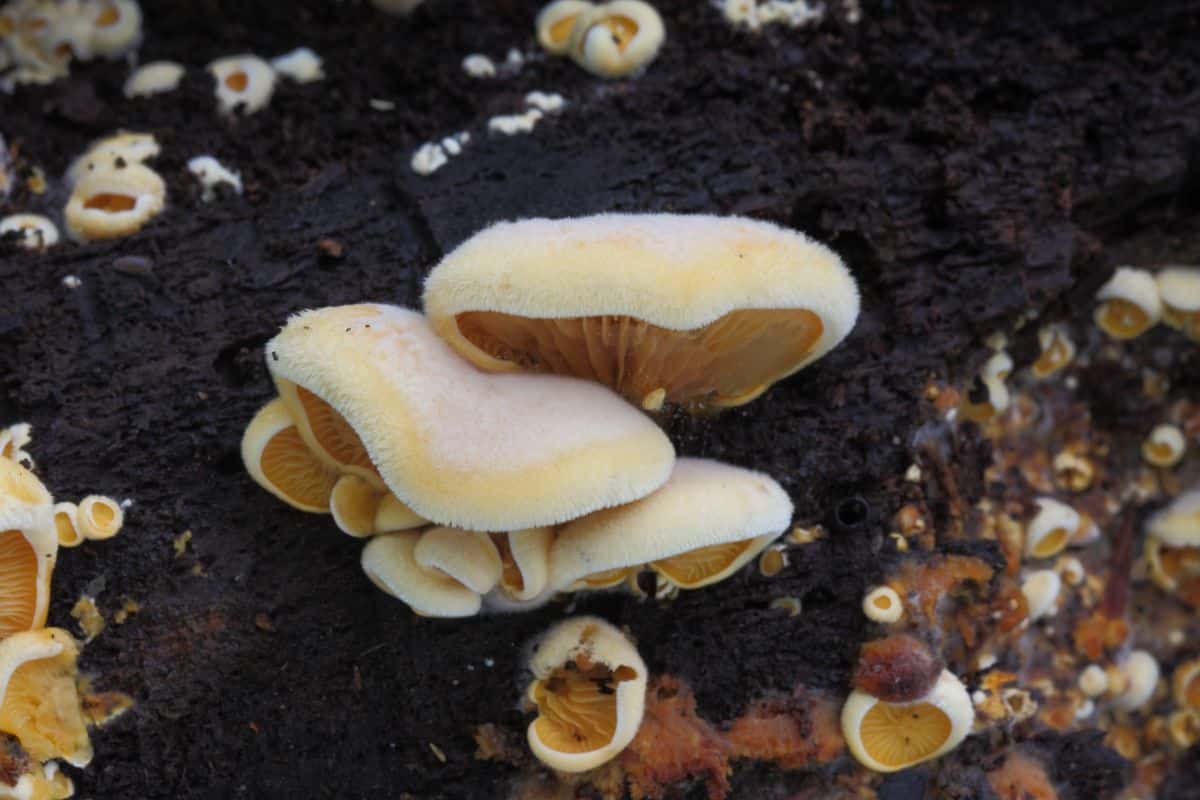
Bear Lentinellus (Lentinellus ursinus)
The bear lentinellus has a similar fan-like cap shape and grows on wood. The gills may even look the same with a quick glance. However, closer inspection will show the folded gills of the split-gill to be their distinguishing factor. Bear lentinellus also tends to get much bigger, reaching up to 4 inches wide.
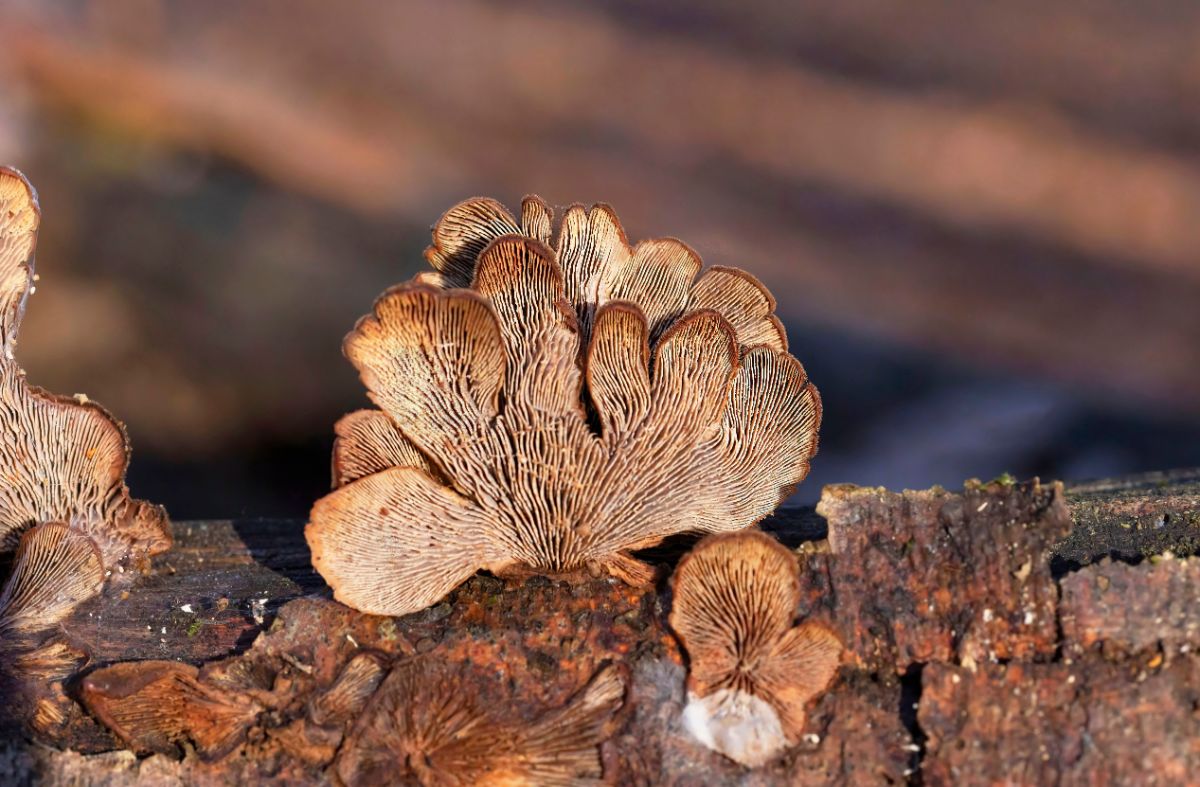
Splitgill Edibility and Culinary Uses
While the splitgill mushroom is not toxic, it is generally considered inedible due to its tough texture. However, in some cultures, this mushroom is used in culinary preparations. For instance, in Northeast India, it is used as an ingredient for Manipuri-style pancakes called paaknam.
Similarly, the split gill mushroom is widely consumed in Mexico and other tropical areas — it has a widespread acceptance as a nutritious food option.
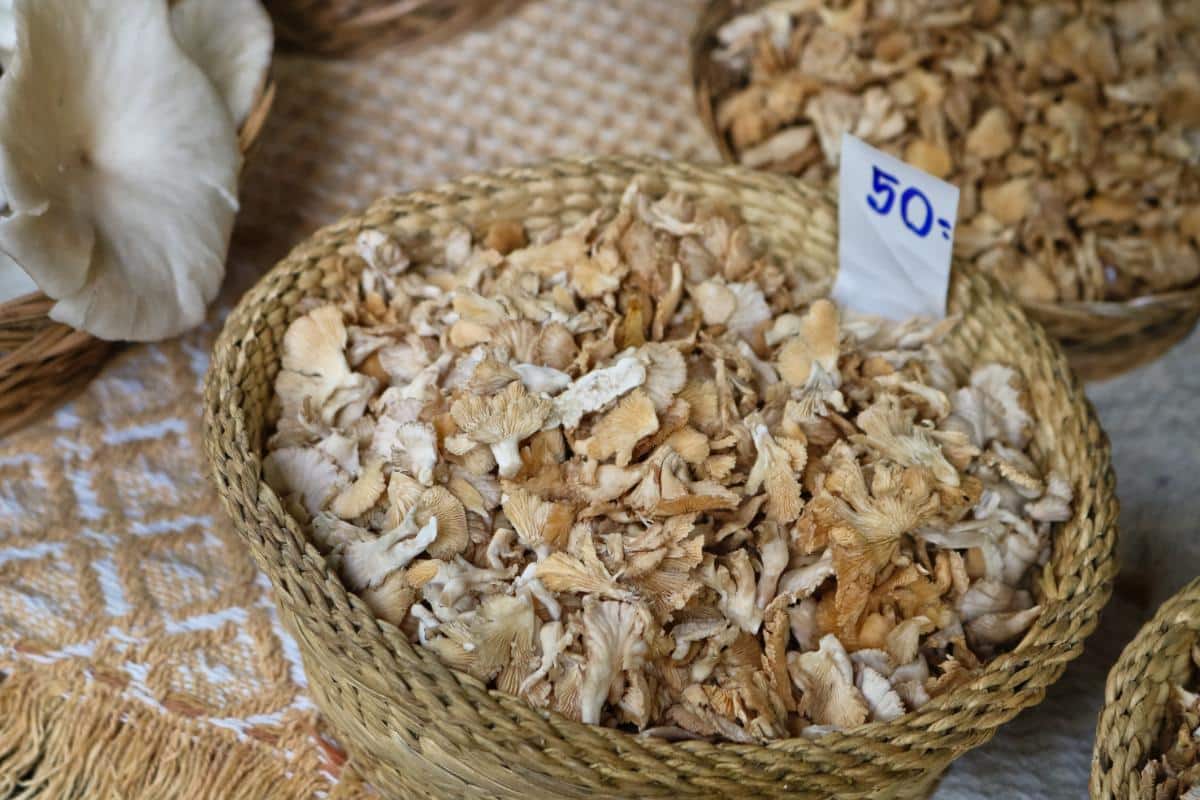
Split Gill Mushroom Medicinal Properties
While it is recognized for its potential health benefits, it is also an occasional human pathogen. This split gill mushroom is primarily associated with sinusitis and allergic bronchopulmonary mycosis. These conditions are often seen in individuals with compromised immune systems, where the fungus can become invasive, leading to severe infections requiring surgical interventions such as drainage and debridement combined with antifungal therapy.
Extracts from this mushroom have shown promising therapeutic effects, including antioxidant and antitumor activities, as well as antimicrobial and immunomodulating properties. Notably, the split gill mushroom contains bioactive components like schizophyllan, a polysaccharide known for its immune-boosting properties, and adenosine, which has various physiological effects beneficial for the cardiovascular system and protective against tissue damage caused by hypoxia and inflammation.
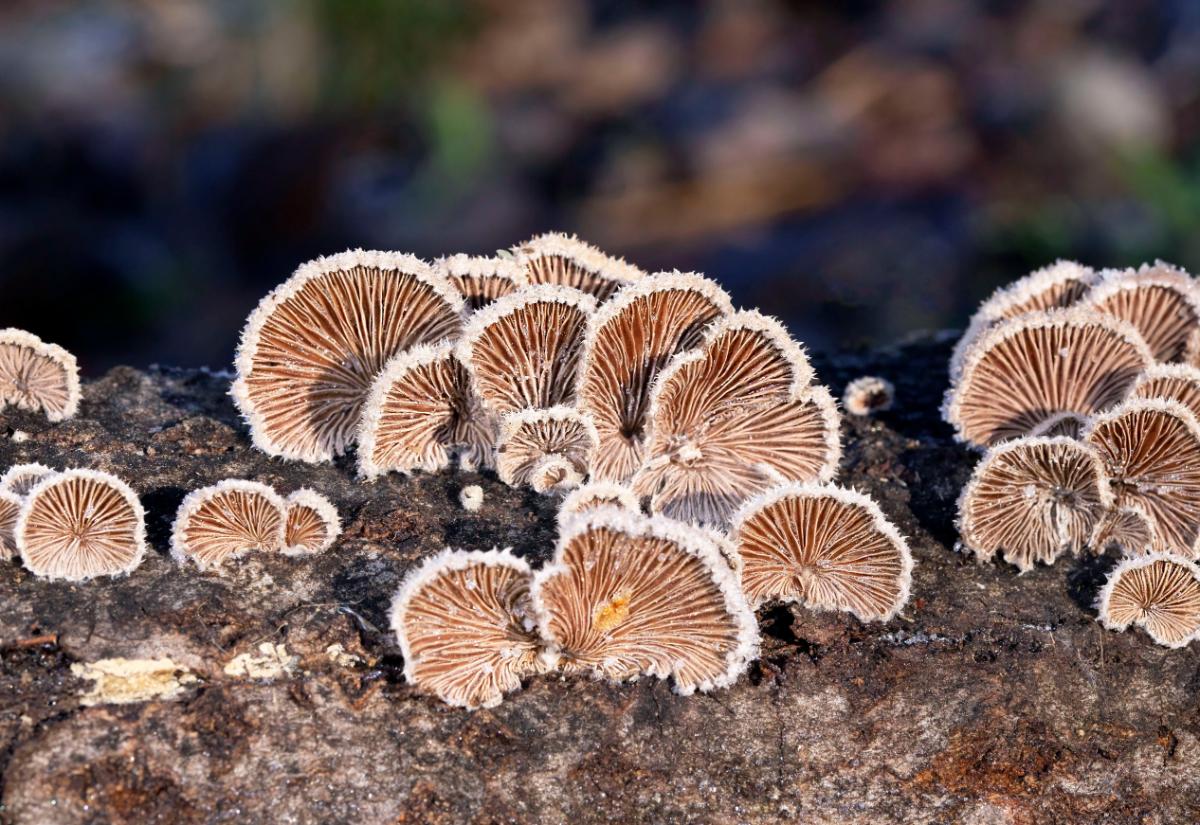
Recent studies highlight the significant medical potential of Schizophyllum commune, particularly in how it interacts with the ACE2 and TMPRSS2 proteins, which are key to the entry of viruses like SARS-CoV-2 into human cells. Research indicates that compounds in Schizophyllum commune can inhibit these proteins, suggesting a possible role in managing viral infections such as COVID-19.
Research has also been done evaluating split gills as a food enhancer. A study in 2023 explored split gill mushroom extract as a natural flavor enhancer for low-sodium foods – basically, the mushroom enhances the flavor, so you don’t miss the salt as much.
Ongoing research continues to explore the full spectrum of benefits offered by this fungus, including its anti-aging, moisturizing, and anti-inflammatory properties, making it a subject of interest in both the pharmaceutical and cosmetic industries.
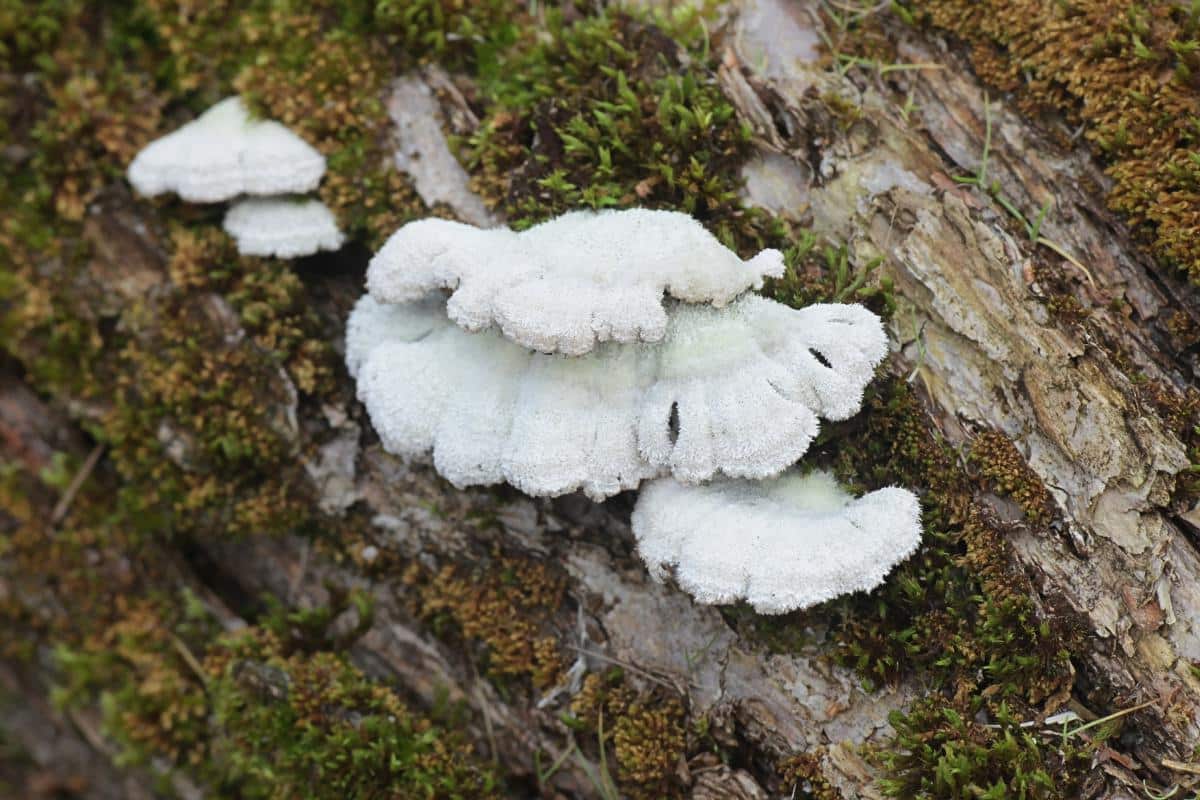
Splitgill Mushroom Insecticide?
The split gill mushroom has shown potential for use in agricultural fields. It exhibits insecticidal effects against Spodoptera litura, a common agricultural pest. The split gill might be an eco-friendly alternative to chemical insecticides.
Split Gill Mushrooms Common Questions
What are the uses of Schizophyllum commune?
The split gill mushroom may possess properties that aid cancer treatment and immune system modulation. These include anticancer, antitumor, and immunomodulating effects. It is also eaten in some cultures. Some recent research explores the use of the split gill as a natural flavor enhancer in low-sodium foods. In many Asian and Latin American countries, it is eaten for its medicinal properties.
Is it safe to eat Schizophyllum commune, the splitgill mushroom?
Yes, the split gill mushroom is edible and is commonly consumed in various Asian countries, including China, India, Thailand, Taiwan, Malaysia, and Vietnam. It is used both as food and for its medicinal properties.
Is the splitgill mushroom toxic?
No, the split gill mushroom (Schizophyllum commune) is not poisonous.
Can split gill mushrooms be grown commercially?
Yes, split gills are commercially cultivated.
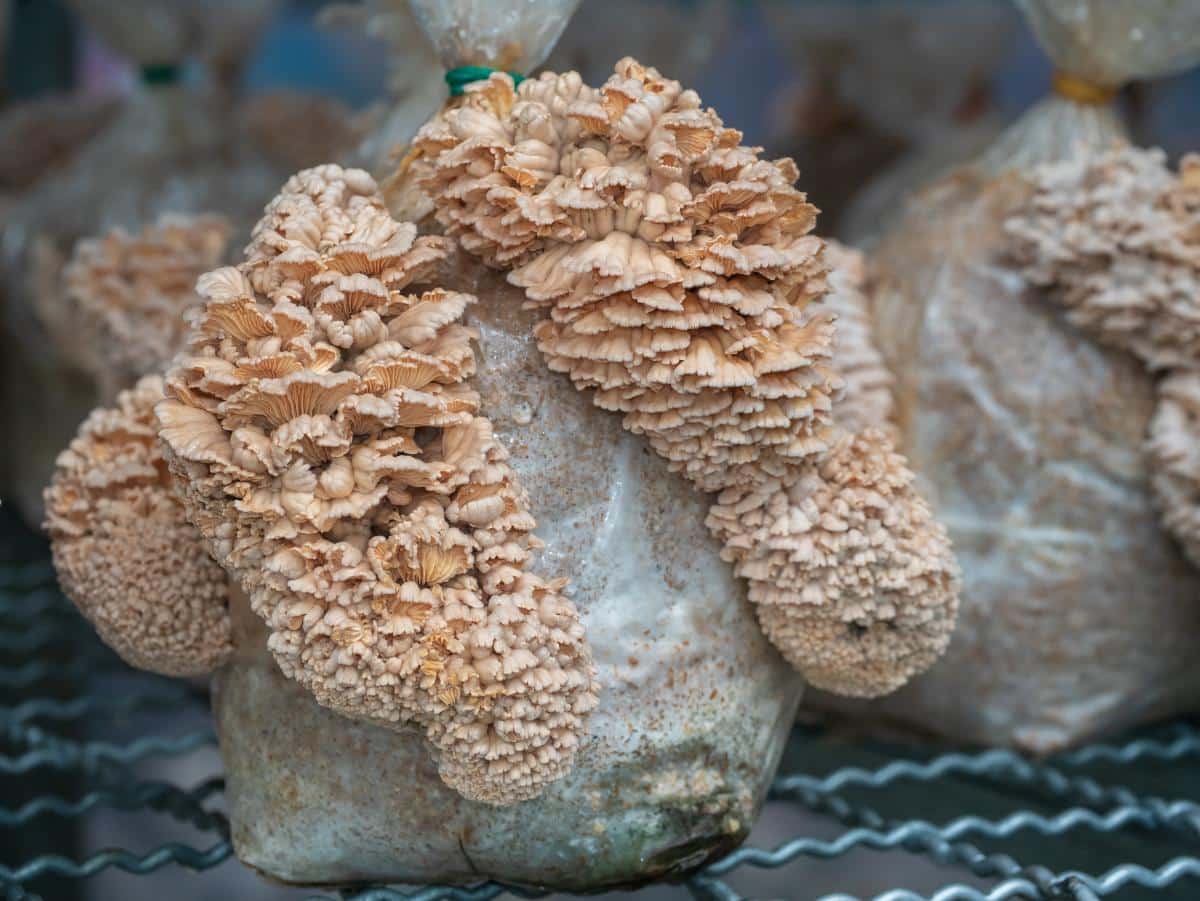

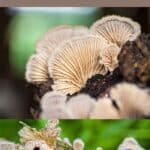
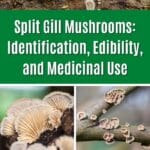
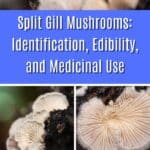
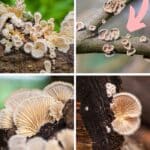




Leave a Reply